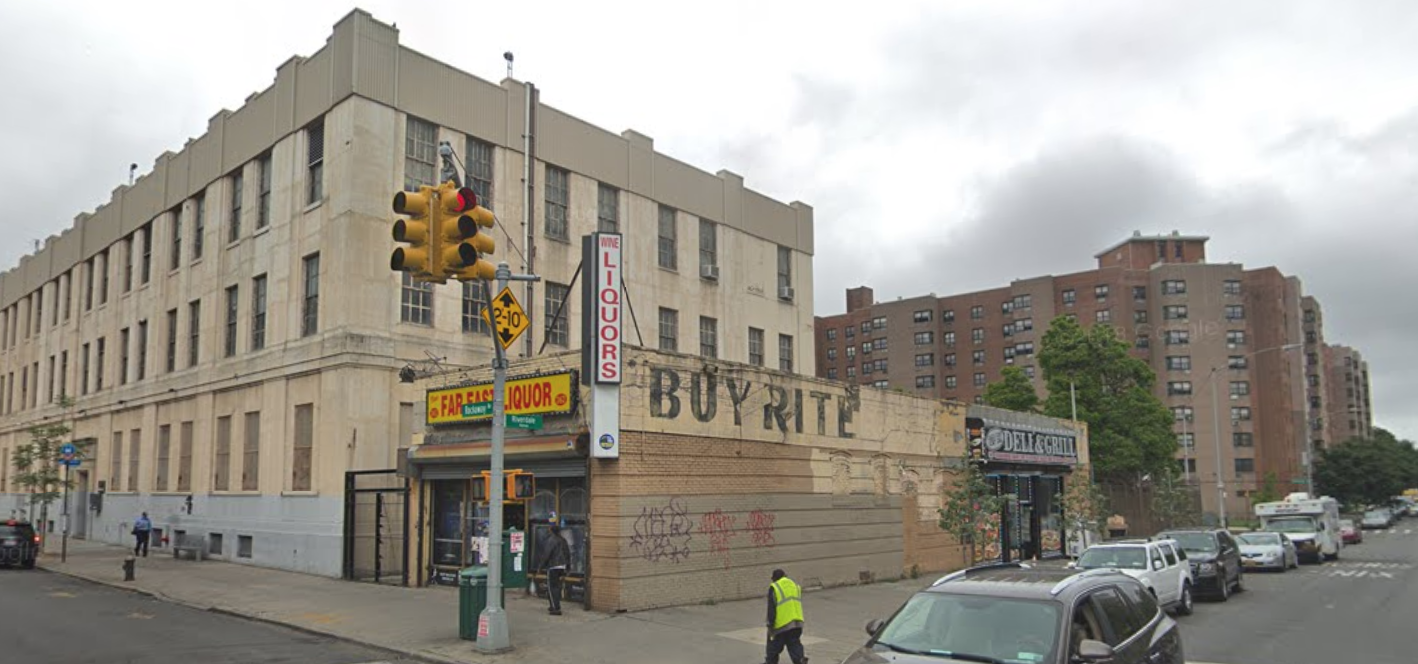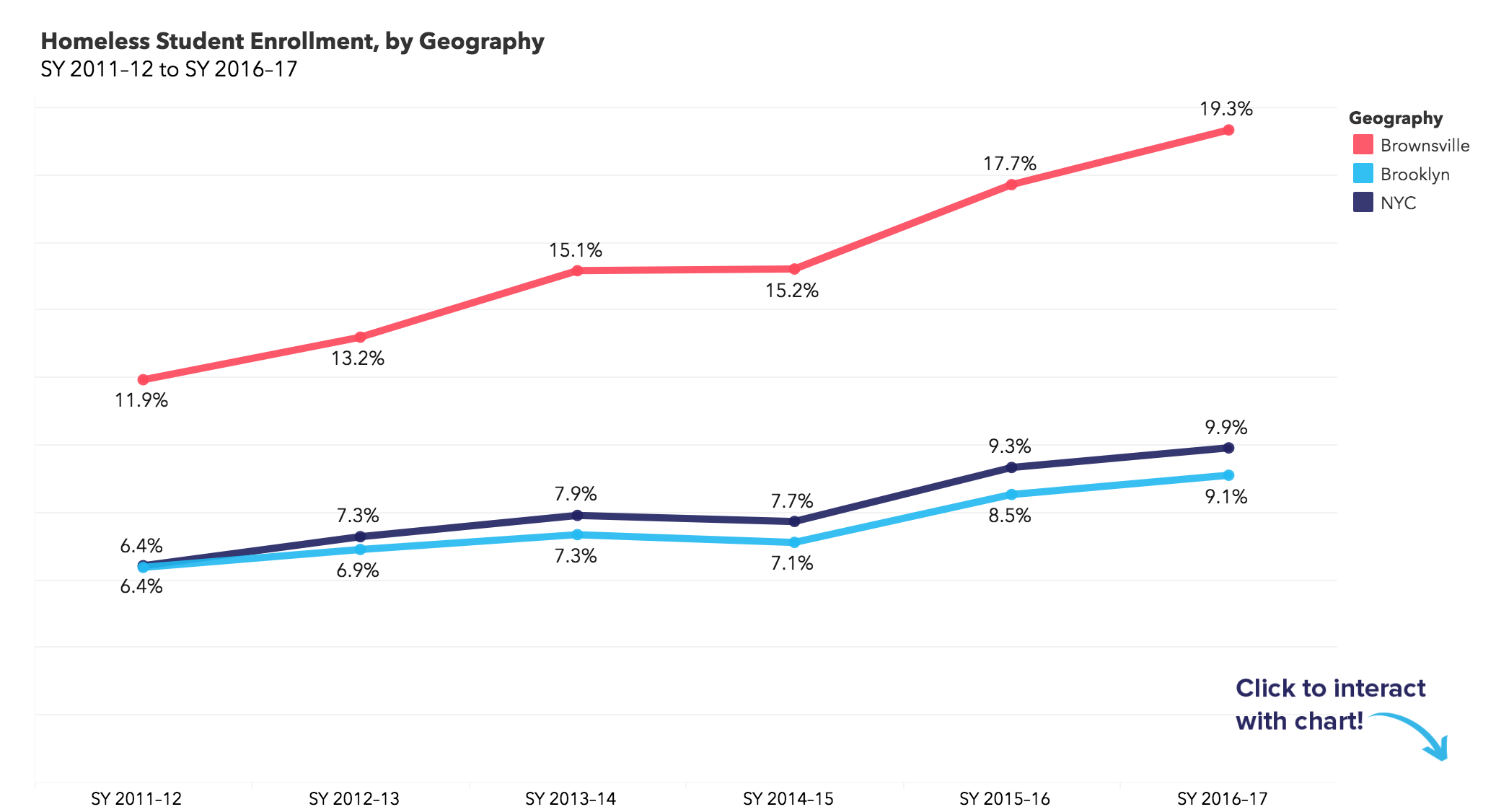Brownsville Families Are Most Vulnerable to Housing Instability in the City


BROWNSVILLE — Families in Brownsville enter homeless shelters at a rate much higher than other parts of New York City, according to a new report.
The Institute for Children, Poverty, and Homelessness (ICPH), a New York City policy research organization, released the “Dynamics of Family Homelessness in Brownsville report” on Tuesday, which explored the multiple issues in the community that lead to homelessness in the first place.
“The community of Brownsville offers an example of how the shelter system, family, and neighborhood dynamics intertwine to make families vulnerable to housing instability,” Chloe Stein, Principal Policy Analyst at ICPH said in a statement. “Poverty and a lack of economic opportunity can create a web of destabilizing factors that threaten a family’s ability to maintain permanent housing.”
Brownsville, nestled in east Brooklyn between Crown Heights and East New York, is 1.2 square miles in area and home to 57,000 people, with over 7,600 NYCHA units housing almost 18,000 residents. There are a total of 12 shelters in the neighborhood, out of 90 across Brooklyn.
Why are families seeking shelter?
“There are so many socio-economic factors that play into this,” Andrea Pizano, the Chief of Policy Research at the ICPH told us. “High rates of poverty, addiction, incarceration and domestic violence, all these things come into play when you’re talking about this problem.”
According to the study, families in Brownsville enter shelters at more than twice the rate of the rest of Brooklyn and New York City. Evictions and domestic violence were the main reasons for entering shelters. In 2015, the most recent year where the data is available, 24% of homeless families in Brownsville were the result of an eviction and 23% were a result of domestic violence.
Other common factors for families entering shelters include unemployment and unaffordable housing. Forty percent of families in the neighborhood live in poverty, compared to 25% in the rest of Brooklyn, and 23% in New York City. Sixty percent of all households in Brownsville are rent-burdened, meaning a household is spending more than 30% of their income on rent according to the National Center for Children in Poverty (NCCP).
The community is also limited in its renting market. The vacancy rate is only 4% and of all the vacant units only 35% of them are available for rent.
How are the kids?
One of the glaring findings in the study is the impact on academic achievements homelessness is having on students. According to the research, student homelessness in Brownsville has seen a 31% increase since 2011-2012 School Year. One in five students were experiencing homelessness in the 2016-2017 School Year. This trend is contrary to those in Brooklyn and NYC, where one-quarter (26%) to one-third (33%) of homeless students resided in a shelter.

Sixty-five percent of the homeless students in Brownsville live in shelters. Twenty-eight percent live with other people in temporary arrangements. These numbers have a strong impact on students’ performance in schools.
“Brownsville has the lowest graduation rate in New York City,” Pizano said.
The Brownsville Plan
However, according to the report, Brownsville is making an effort to combat this problem — With actions like developing public spaces, investing in youth development and implementing affordable housing, early education and anti-violence initiatives.
In the summer of 2019, the city invested $9 million towards anti-violence initiatives in the neighborhood.
Also from 2016-2017 community organizers and leaders worked with the NYC Office of Housing Preservation and Development and created the “Brownsville Plan” which is in the process of being implemented. The goal is to invest $1 billion to turn vacant city property into 2,500 affordable houses. The money would also go towards creating new community and retail spaces.
“Homelessness can have far-reaching, intergenerational consequences for adults, children, and communities,” Pizano said in a statement. “So, every effort must be made to prevent homelessness and provide the necessary supports to those families already experiencing the loss of a home.”
Update: Brownsville has the lowest graduation rate, not acceleration rate.




